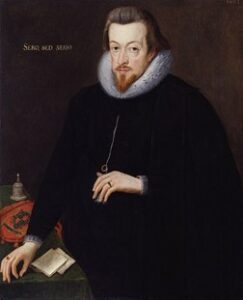Membership of the IHR library is open to all and free of charge. Readers can join and renew online, and membership cards can be collected or posted. Membership gives access to our unique library of published primary sources, guides to sources and historical reference works. Find out more on the collections pages of the website.
The library is a non-lending library with collections and reading rooms spread over five floors. Within the library, members can access a range of online resources. Due to standard licences most aren’t available from outside the IHR building except to IHR staff and students. However, four new resources are now available offsite to all library members. To access them, follow the links from the library catalogue or website and you will be prompted to log in using your name and the barcode number on your IHR membership card. The full list of resources available remotely appears below. We’ll continue to explore other opportunities to widen offsite access. Please contact ihr.library@sas.ac.uk if you would like any help.
- Acta Sanctorum
- Cecil Papers
- Churchill Papers
- Patrologia Latina
- Public Petitions to Parliament, 1833-1918
Below is a brief overview of the four newly available resources written by Barbara Roberts and Marco Spreafico, new members of the IHR library team.
Acta Sanctorum
The Acta Sanctorum Database is an electronic version of the complete printed text of Acta Sanctorum from the 68-volumes edition (1643-1940) published by the Société des Bollandistes. It is a collection of documents examining the lives of saints, organised according to each saint’s feast day, assembled and edited according to the principles of historical criticism. The database includes all prefatory material, original texts, critical apparatus, indices, and Bibliotheca Hagiographica Latina reference numbers.
The database enables users to search any word or combination of words, anywhere in the text or title of a work. Search terms and search sets can be combined using Boolean operators and wildcards for different forms of a word. The database provides a range of search fields and browse lists to help locating individual works.
Customers who own both the Acta Sanctorum and Patrologia Latina databases can find entries on search terms and texts in both corpora. Users also have access to entries in Mediae Latinitatis Lexicon Minus as an additional resource.
Cecil Papers
The Cecil Papers database comprises around 30,000 sixteenth and seventeenth-century manuscripts, namely the correspondence of William Cecil, Lord Burghley (1520-1598) and his son Robert, the 1st Earl of Salisbury (1563-1612), along with documents acquired by Robert Cecil that previously belonged to his rival, Robert Devereux, the 2nd Earl of Essex. These documents are listed on the database under the publications ‘The Cecil Papers, Volumes, ‘The Cecil Papers, Petitions’ and ‘The Cecil Papers, Maps.’ In addition, the Cecil Papers database gives access to the Cecil Family and Estate Papers, consisting of family and estate documents from three generations of the Cecil family and dating between 1601 and 1668.
The documents’ dates span the period 1520-1668, from the birth of William Cecil, Lord Burghley, to the death of William Cecil, 2nd Earl of Salisbury. The Cecil family dominated government during the reign of Elizabeth I and the earliest part of James I’s reign, with its heads serving as Secretaries of State and Lords High Treasurer. The documents’ subject matter therefore consists of both English domestic politics and overseas politics and international relations (i.e. reports of English ambassadors to foreign courts, reports of overseas agents). Events addressed include the Tudor re-conquest of Ireland, the Anglo-Spanish war, the English loss of Calais, and the early settlement of America.
Each document can be viewed using a dynamic viewing tool or downloaded as PDFs or JPEG images. Each also has searchable metadata including dates of writing, accession numbers, document types and authors/recipients, along with digitised and searchable associated transcripts and summaries. All transcripts and summaries have a text-to-speech function.
Maps in the collection include different areas and settlements in the British Isles and beyond, and other drawings and diagrams, such as one of a wall-scaling siege engine.
Additional resources hosted on the site include an essay about the collection’s archival history and a note on how the papers were numbered by archivists at Hatfield House, the physical home of the manuscripts.

Patrologia Latina
The Patrologia Latina database is the electronic version of the first edition of Jacques-Paul Migne’s Patrologia Latina, published between 1844 and 1855, and the four volumes of indices published between 1862 and 1865. This includes all prefaces, original texts, critical apparatus and indices, and Migne’s column numbers (frequently used as references by scholars). Footnotes are hyperlinked within the text.
Migne’s Patrologia Latina comprises editions of the works of the Church Fathers in Latin dating from Tertullian’s lifetime in the third century CE to the death of Pope Innocent III in 1216. However, a few later texts are included to reflect Migne’s decision to incorporate medieval texts written after 1216 where these were traditionally attached to an earlier work, often as a commentary or an introduction.
You can perform a search for keywords, titles, authors, and volume numbers. Keyword searches pull up results with contexts (i.e. the surrounding two lines of Latin). You can also generate a permalink/durable URL to individual works.
The resource also has a page listing the BHL (Bibliotheca Hagiographica Latina) with hyperlinks to the Patrologia Latina and Acta Sanctorum.
Additionally, users have access through the Lexicon tab to Niermeyer’s 1984 Mediae Latinitatis Lexicon Minus, a medieval Latin dictionary providing French and English translations of each word.

Psalter (the ‘Shaftesbury Psalter’) with calendar and prayers. England, CC BY-SA 4.0, Public domain, via Wikimedia Commons.
Public Petitions
The Public Petitions database contains petitions to Parliament on a variety of issues of interest to Britons – such as colonial administration, educational policy, crime and ecclesiastical matters – spanning the period 1833-1918, when petitioning was the most popular form of political participation. As well as allowing for detailed textual and rhetorical analysis of the petitions, the database enables users to assess the significance, impact and consequence of these issues on the British populace according to its social background, geographical location and religious affiliation; and to analyse the functioning of political practice and the effectiveness of participation from a “bottom up” historical perspective.
The database provides four search options: ‘Advanced Search’, which allows combinations of terms, searching different fields, limiting by different parts of the content and collections, and limiting by date and parliamentary session; ‘Command Papers by Number’, ‘Search for Debates’ and ‘Members, Offices & Constituencies’. For each Member of Parliament, brief biographical information, their constituencies and parliamentary offices and contributions to Hansard are listed.
(adapted from the Proquest website)

